| |
Reel Wars
Wars are often forgotten by the masses, but war
films keep those memories of sacrifice and pride alive. Patriotic films, as a
special and much-admired genre of Indian cinema, have had a tremendous impact on
our people, cutting across religious, regional, linguistic and economic
identitiesBy Pratibha Advani
As an art form that strikes the chords of both
emotion and intellect, the power of cinema is unmatched. Which is perhaps why
reel wars have had a much more lasting impact on our patriotic vein than real
wars. While ticker-tape parades for Indian soldiers have been few and far
between, and the few star-spangled ceremonies that are enacted are soon
forgotten, the movies that narrate stories of heroism have played a key role in
keeping us in touch with the reality of our bleeding borders, despite the
protests of those who deride such primetime chest thumping.
Indian cinema has contributed immensely to the
cultivation of the uniting and uplifting feeling of nationalism. Patriotic
films, as a special and much-admired genre of Indian cinema, have had a
tremendous impact on our people, cutting across religious, regional, linguistic
and economic identities. Moreover, they have also proved their unsurpassed power
of communicating both to educated and illiterate masses.
For most Indians, cinema is the enduring source
of the image of their nation as a vast and diverse land bound by the Himalayas
in the north, surrounded by oceans on three sides, girdled by sacred rivers like
the Ganga, Yamuna and Godavari, and blessed with captivating natural beauty and
rich resources. For them it is also the primary source of knowledge about our
national heroes, martyrs, the struggles and sacrifices of our forefathers, the
work of our social reformers, the wars of the pre- and post-Independence era,
including the recent and ongoing war against cross-border terrorism, and our
achievements as a free and democratic nation.
.jpg) |
|
Thus, few can contest Indian
cinema’s, particularly Hindi cinema’s, unmatched contribution to strengthening
the bonds of national integration, countering divisive feelings, educating the
people about our shared national history and, through all this, re-enforcing in
them pride and love for the Motherland.For
any self-respecting nation, patriotism of its citizens is its heartbeat. If it
is there, not only is the nation’s continued |
existence
across centuries and millennia guaranteed, but its progressive evolution is also
ensured. If it is not there, the nation suffers decline, debility and eventual
doom India is
fondly called by its people as ‘Bharat’. The name harks back to its epic past,
whose beginnings have defied determination. Hence, India evokes a sense of
timelessness. Of course, India has been changing perpetually ever since its
hoary antiquity. It has also suffered such vicissitudes of history as have
pushed several other ancient nations and civilizations into extinction.
|
How then has India faced all
these internal changes and external assaults, and yet managed to remain alive as
a vibrant and ascendant nation in the 21st century? The answer is patriotism,
the common emotion and self-awareness that unites our people in spite of the
unmatched diversity they exhibit.
“Ananya Bharati” is a
documentary that encapsulates the spirit of patriotism that the Hindi film
Industry has captured on celluloid and nurtured in the hearts of Indians.
Produced under the banner of my company, Swayam Infotainment, I thought the most
apt beginning to this documentary would be ace musician A. R. Rahman bowing to the |
|
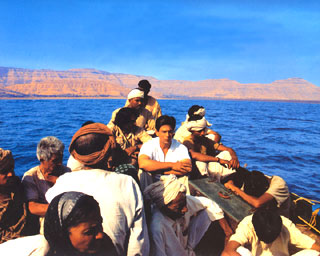 |
motherland with his rendition of “Maa Tujhe Salaam”. This forms a part of
his album “Vande Mataram” produced by
BharatBala Pictures. Then “Ananya Bharati” categorises Indian patriotic films
primarily into three categories.
The first category comprises of films
associated with terrorism. The second, features films about martyrs of the
freedom struggle and events linked to the partition of the country and the third
category has war films that depict the India-Pakistan conflict. “Ananya Bharati” also talks
about films about nation-building like the recently released ‘Swades’. The
documentary concludes with an emotional punch in the form of a bouquet of
patriotic songs that have captured the national imagination.
Patriotic Films the
Beginning
The Hindi film industry’s adoption of
patriotic themes happened at its very inception, when India was engaged in a
unique struggle for freedom from the British colonial rule. The first film that
boldly ventured in this direction was Sohrab Modi’s ‘Sikandar’. This 1941 film
carried the message of patriotism indirectly by praising the valour of King
Porus in his war against Alexander the Great, the invader. Other films of this
era were ‘Bandhan’ (1940) and ‘Kismet’ (1943).When
freedom dawned on 15th August 1947, ending 200 years of alien
rule.
|
|
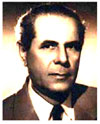 |
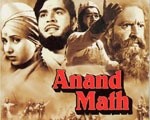 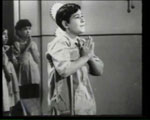 |
|
The Indian film industry
was there to celebrate this historic transition. The air those days was filled
with the hopes and dreams of building a New India, most inspiringly
articulated by our first Prime Minister Pandit Jawaharlal Nehru. Bollywood
captured this mood in films like Naya Daur(1957) and ‘Hum Hindustani’(1960).
‘Anand Math’(1952), ‘Jaagriti’
(1954) and ‘Leader’ (1964) focused on the freedom struggle and the sacrifices
made by its martyrs.
Some others like ‘Sikander-e-Azam’(1965) and ‘Jis Desh Mein
Ganga Behti Hai’(1960), through their songs, talked about the greatness of
India. Then there were films that were inspired by the violation of the
country’s barriers by the enemies. Three notable films made on the subject were
‘Haqeeqat’ (1964), ‘Prem Pujari’ (1970) and ‘Lalkaar’
(1972). Of these, ‘Haqeeqat’,
which is about the Chinese aggression in 1962, has left a
lasting impact. |
Films on Terrorism
The 80s decade saw India faced with a peculiar form
of war -- a proxy-war from across the border in the form of terrorism. First it
cast its evil eye on Punjab, bleeding it for nearly a decade before being
snuffed out. Then it targeted Jammu & Kashmir. The perpetrators of this proxy
war were also behind extremism and terrorism in India’s North-East. Films that
dealt with the issue not only portrayed the barbaric face of terrorism, but also
exposed the misleading propaganda that sought to justify it and draw direct and
indirect support for it.
|
Some of the important films in
this category are ‘Karma’ by the great showman Subhash Ghai, and ‘Maachis’ by
lyricist and film-maker Gulzar. While ‘Karma’ emphasised the need for fortifying
the country’s commitment to overpower terrorism, ‘Maachis’ was a very sensitive
portrayal of how some youth of Punjab were misled into taking to the gun.
Another memorable film from this period is renowned filmmaker Mani Ratnam’s
‘Roja’ (1993), which also introduced a new melody in Hindi films songs and the
talented music composer, Rahman. Vidhu Vinod Chopra’s ‘Mission Kashmir’,
tackling the same theme,
sought to revive the forgotten concept of ‘Kashmiriyat’.
Two other films set against the same backdrop of terrorism in Kashmir - ‘The
Hero’ (2003) and ‘Zameen’ (also 2003) eulogised the bravery of Indian soldiers
and undercover agents in overpowering the enemy in his own stronghold.
Mani Ratnam re-visited this theme in his 1998 film
‘Dil Se’. The following year saw the release of another powerful film
‘Sarfarosh’ by John Mathew Matthan, which was a tribute to those patriotic
police officers who fearlessly fight social evils. As an attempt to boost the
morale of the much-maligned security forces, it was a highly commendable film. |
|
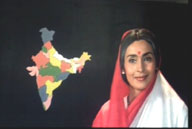 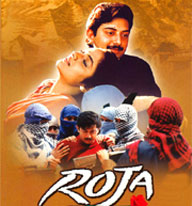 |
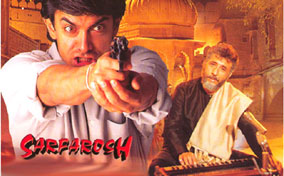 |
|
‘Refugee’ (2000) by J.P. Dutta, who specialises
in making patriotic films with a mega star-cast, stands out for touching upon an
interesting subject: The “buffer zone” on both sides of the Indo-Pak border,
where people have their own definition of patriotism, and how terrorists take
advantage of such a situation. The film also saw the launching of two star
children -- Amitabh Bachchan’s son Abhishek and Randhir Kapoor’s daughter
Kareena Kapoor, both of whom have moved on to become mega-stars themselves.
|
Films on the freedom struggle
The ‘90s witnessed a revival of Bollywood’s interest in themes linked to the
independence movement. In 1994, taking the ‘Quit India Movement’ as the
backdrop, Vidhu Vinod Chopra made ‘1942- A Love Story’. This sensitive film
succeeded in transforming a love story into a story of love for the Motherland.
‘Sazaa-e-Kalapani’ (1996) by film maker Priyadarshan, recreated for the
cine-viewers the barbaric treatment meted out to Indian freedom
fighters imprisoned in the |
|
 |
hated Cellular Jail at Andaman, and their spirited
resistance to it. By far
the most popular and entertaining film in this genre was ‘Lagaan’ (2001), in
which Aamir Khan was both the hero and the producer. Directed by Ashutosh
Gowarikar, it chose a simple story of an extortionist tax imposed on Indian
farmers by the British rulers. However, through the device of a captivating
cricket match between the gora sahibs and the common village folk, it portrayed
how Indians turned the tables on the enslavers.
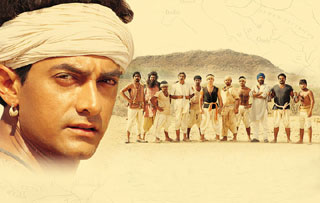 |
|
Few films in the history of world cinema have
depicted the concept of passive resistance for a just cause as creatively as
‘Lagaan’ did. Predictably, the film received immense critical acclaim and went
on to be nominated for the Oscars.The
Partition of India in 1947 remains the most tragic event yet in our national
history. It caused great havoc and chaos on both sides of the border. Tens of
thousands of people - both Hindus and Muslims -- lost their lives in the riots
that followed and many more became homeless. |
‘Garam Hawa’ (1973) by M.S.
Sathyu was the first film to focus on this upheaval, and it did so very
touchingly. In 2002 came ‘Gadar’, which was a gripping narration of the
friendship between a Muslim girl and a Hindu truck driver who fetches supplies
to her school.
The Partition riots cause her family
|
to move to Lahore, but she
gets left behind. She is found and sheltered by the truck driver. She goes on to
change her religion and marry him. The couple have a son and are happy. Till one
day she finds out that her family is alive in Pakistan. She decides to visit
them and then the story takes a twist as old wounds are re-opened. This is a
moving film about brotherhood between Hindus and Muslims and peaceful
co-existence between India and Pakistan. |
|
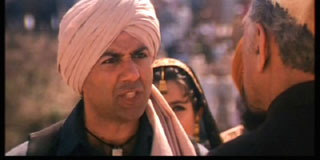 |
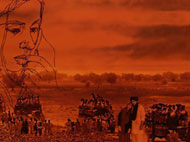 |
|
Also set against the
backdrop of the Partition is the 2003 film ‘Pinjar’, a cinematic adaptation of
Amrita Pritam’s famous novel of the same name by Chandraprakash Dwivedi.
Incidentally, he had made a highly popular TV serial ‘Chanakya’, which chose an
Indian hero of ancient times to transmit many contemporary messages.
Showing the trauma of partition, the film
powerfully conveyed that atrocity does not have any religion and sounded the
warning that history must not be allowed to repeat itself.
|
The great revolutionaries of
the freedom movement like Sardar Patel, Udham Singh and Vinod Damodar Savarkar
inspired many a film makers to make films on them. Veer Savarkar’s inspirational
life was the subject of a film- ‘Veer Savarkar’ by Ved Rahi in 2001.
Any description of the films in this category would be woefully incomplete
without reference to Indian cinema’s fascination with the life and martyrdom of
Shaheed Bhagat Singh, who kissed the British gallows at the tender age of 24. |
|
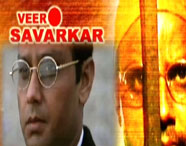 |
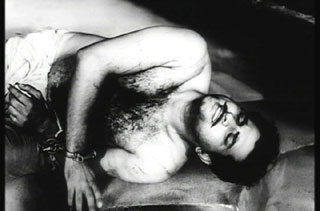 |
|
His life story has never failed
to inspire the masses. Innumerable songs have been composed about him, and the
youth throughout the country have idolized him. He has been a symbol of bravery
and nationalism. Manoj Kumar’s ‘Shaheed’ (1965), which contained the immortal
song ‘Mera Rang De Basanti Chola’, was the first of the series. The year 2002
alone saw five films added to this series! Two of them featured mega stars in
the lead role- Ajay Devgan in ‘The Legend Of Bhagat Singh’ and Bobby Deol in
‘23rd March 1931-Shaheed’. |
Whenever one thinks of Shaheed
Bhagat Singh, one cannot but remember the martyrdom of another great
revolutionary, Ram Prasad Bismil. No film has been made on his life, but his
inspiring song ‘Sarfaroshi ki tamanna ab hamare dil mein hai’ has been set to
many tunes in many films. Even today, whenever the flag of Independent India
flutters in celebration and triumph, our people’s thoughts go out to the
poet-revolutionaries of the Freedom Struggle. Their verses were immortalised by
Hindi films and made a part of the collective memory of the nation.
War Films
The third category in the post-1980 patriotic
films that “Ananya Bharati” pays tribute to are the war films. These films
salute the courage and sacrifice of our jawans in defence of the Motherland.
|
|
In
recent years, a war film that became a big hit was Dutta’s ‘Border’ (1997), a
fictionalised and dramatised adaptation of the Battle of Longewala during the
1971 Indo-Pak war. The story revolves around a battalion of 120 Indian soldiers
at the border outpost who stand and defend their post bravely against a
Pakistani armoured column consisting of over 4,000 soldiers and tanks.In 1999, India extended a hand
of friendship towards Pakistan. But even |
|
 |
before the talks of this peace mission ended,
Pakistani soldiers crossed the border and occupied the Indian region of Kargil.
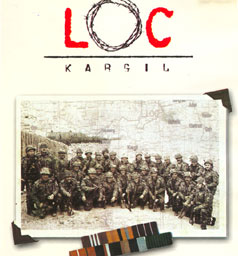 |
|
The war that ensued, and the victory that
India won against extreme odds, is one of the proud chapters in the history of
modern India.
This was captured very realistically in Dutta’s ‘LoC’. The saga of the bravery of Indian
soldiers that it portrayed touched millions of Indian hearts.The Kargil war was also the
subject of Farhan Akhtar’s ‘Lakshya’ (2004).
The film, which focuses on a
cadet’s character, strength, beliefs and values, is about one individual’s
odyssey in life from embarrassing idleness to redeeming self-motivation. Hrithik
Roshan in the main lead, plays the aimless urban drifter and creates a gripping
graph for his character.
|
|
In 2004, another war film ‘Ab
Tumhare Hawale Watan Saathiyon’ was released. Based on the 1971 India-Pakistan
war, it tackles many issues -- harmony between India and Pakistan, current peace
talks between the two countries and a nagging doubt that a foreign country could
be funding certain people in both countries to keep the war going. The film
persuasively shows how both civilians and soldiers on the two sides of the
border yearn for peace.
The bravery of Indian Air Force
pilots, the plight of Indian POWs and their escape from a Pakistani jail - this
forms the story of ‘Agni Pankh’ (2003). The film has some hummable songs
dedicated to the Motherland.
|
|
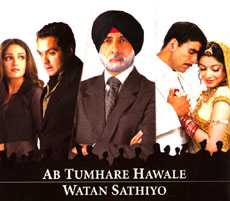 |
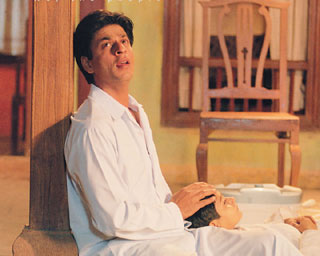 |
|
Nation Building Films
Throughout the post-Independence period in India’s
history, another definition of patriotism has engaged creative minds in
Bollywood. The films that come in this category can be called Nation-Building
Films. Its most recent example is Ashutosh Gowarikar’s ‘Swades’. Even as urban
India witnesses shining economic progress, technological leap and the software
boom, rural India continues to struggle for the fulfillment of basic needs. The
country has seen mass-scale migration from her villages to the cities and also
thousands of educated Indians leaving the country to settle abroad. The excuse given by both
|
groups of migrants is: “There are fewer job
opportunities here.” The bold message that ‘Swades’ seeks to give is that
suitable opportunities need to be created in India, especially rural India.
Patriotism and Hindi Songs
Most of the patriotic songs that are on the lips of millions of
Indians are essentially songs from patriotic films. These songs strike a
chord, pull at our heartstrings and unite us in the love for our country.
Manoj Kumar has always been regarded as the patriotic face of Indian cinema.
So much so, that he has established his identity as ‘Mr Bharat’ forever. In
all the films that he has produced and directed, one can always see the
trademark stamp of nationalism. The songs from his films have a patriotic
rhythm of their own.
|
|
Some of the memorable songs by this great actor-patriot include ‘Mera rang de
basanti chola’ from ‘Shaheed’(1965); ‘Mere desh ki dharti’ from
‘Upkaar’(1967), based on the slogan of `Jai Jawan Jai Kisan’; songs that talked
about the glory of India like ‘Jab zero diya mere Bharat ne’ and ‘Dulhan chali’
both from ‘Poorab Aur Paschim’(1970) ; or those that talked about our commitment
towards the country like `Ab ke baras` from ‘Kranti’(1981).
|
|
 |
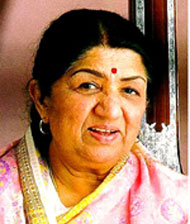 |
|
Of all the great patriotic
songs in Hindi cinema,Aye Mere Watan Ke Logon’, which
was penned by Kavi Pradeep and sung by Lata Mangeshkar for the first time in
1964, remains in a class of its own. It brought tears to the eyes of the then
Prime Minister Jawaharlal Nehru when he heard Lataji singing it in Parliament.
Songs of patriotic films made after the 1980s brought in soulful music by the
likes of Rahman and Anu Malik, the simple words by lyricists such as Javed
Akhtar. While all the songs invigorate us, some also make us swell with pride.
Like the ‘I love my India’ song of ‘Pardes’(1997).
|
An ode to the soldier- some of
the patriotic songs written by lyricist Javed Akhtar capture an army man’s life
- his despair at being separated from his loved ones and family, his camaraderie
with his fellow soldiers and above all, his willingness to lay down his life for
the country.
The songs that depict these sentiments beautifully include ‘Sandese Aate Hain’ from ‘Border’, ‘Khamosh Hai Jo’ from ‘LoC’ and ‘Kandhon Se Milte Hain
Kandhe’ from ‘Lakshya’. Some songs like ‘Janmabhoomi Pe
Jaan Lutate Hain’ from ‘Agnipankh’ salute the soldiers who sacrifice all their
social obligations for their motherland.
The documentary “Ananya Bharati”
concludes by saluting the great Bharati with the tune of our National Anthem
‘Jana Gana Mana’. This video, produced by Bharatbala Productions, was shot with
Indian soldiers in Siachen—the world’s highest army base at 21,147 feet.
|
|
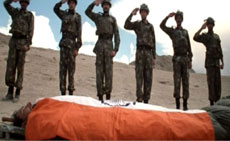 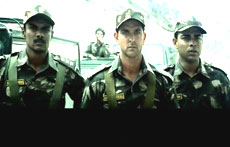 |
|
|